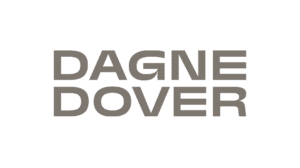Holiday planning for e-commerce brands is underway, and every year we proactively take this time to position our clients for success in preparation for the busy Q4 holiday shopping season. Historically, Cyber Five was the key revenue driving period for brands, but YoY data indicates that consumers are starting their shopping earlier, and many have already made a purchase.
In the current macroeconomic climate, we are preparing for another year of uncertainty. As your agency partner, we want to be transparent about the market trends and data we are gathering from our partners at Google and Meta.
Key Challenges & Observations
- Consumer purchasing is split making each month critical
- October = 32%, November = 32%, and December = 36%
- One miss = ⅓ of holiday
- Consumers are shifting away from branded searches
- Aggregate total:
- Branded: -3%
- Generic: +1%
- Aggregate total:
- Consumers are on the lookout for deals and open-minded about who they buy from
- 36% said they purchased a brand different from their preferred brand to get a better price
- 30% shopped at a store that was not their preferred store
- 56% will hold off on buying gifts until they are on sale
- Free shipping options and fast delivery have become table stakes for retailers during Holiday
- Besides price, the top factor that determines where holiday gifts are purchased from:
- Free Shipping/Shipping Speed
- Convenience/Proximity to Store Location
- Besides price, the top factor that determines where holiday gifts are purchased from:

Source: Google Internal Data, 2020-2022.
Ways to Win Your Holiday
- Be Proactive – We’re recommending that partners supply creative with an increased discount (20% vs 25%) in the event that we need to swap in order to be more aggressive in market
- Be Flexible – Base and stretch goals are going to be key to winning your Holiday push
- Be Nimble – ROAS floors are a great way to strike while the iron is hot. Confirm ROAS bands with your team to speed up decision making in the moment
Quick Stats: Think With Google
- People are shopping earlier than ever
- 26% of shoppers globally have already begun their holiday shopping.
- Many people research and shop months in advance of events, and this year is no exception
- Those who have already begun their holiday shopping want help with:
- 47%: Gift ideas and inspiration
- 44%: Starting gift lifts
- and 18% have already made a purchase
- Unboxing videos, written recipes, home improvement blogs, and more all help to inform buying decisions
- 67% of YouTube viewers surveyed have made a purchase as a result of sponsored content
- Video ads can help brands deliver relevant, personalized experiences to audiences at their most engaged moments
- 64% of U.S. holiday shoppers who used Google said they did so for “discovery and inspiration”
- Visual shopping experiences such as lifestyle photography, videos, and customer reviews can make lasting impressions
- Omnibuyers: Searches containing “near me in stock” have grown in the US by more than 90% YoY
- Omni Buyers are paving the way for “intuitive shopping,” where people browse and find inspiration concurrently, online and offline, across multiple product categories
- In the US, people are shopping across seven categories in a two-day period
- Searches containing “cheap and best” have grown globally by over 40% YoY
- 76% of US shoppers want to buy higher-quality products that last longer
- Promote your deals, shopping, and return benefits, in-store inventory, and store pickup options in your messaging and on Search
If you’re not already a Mason client, book a consultation with our team and we’ll work on a tailored approach for your brand, together.
































